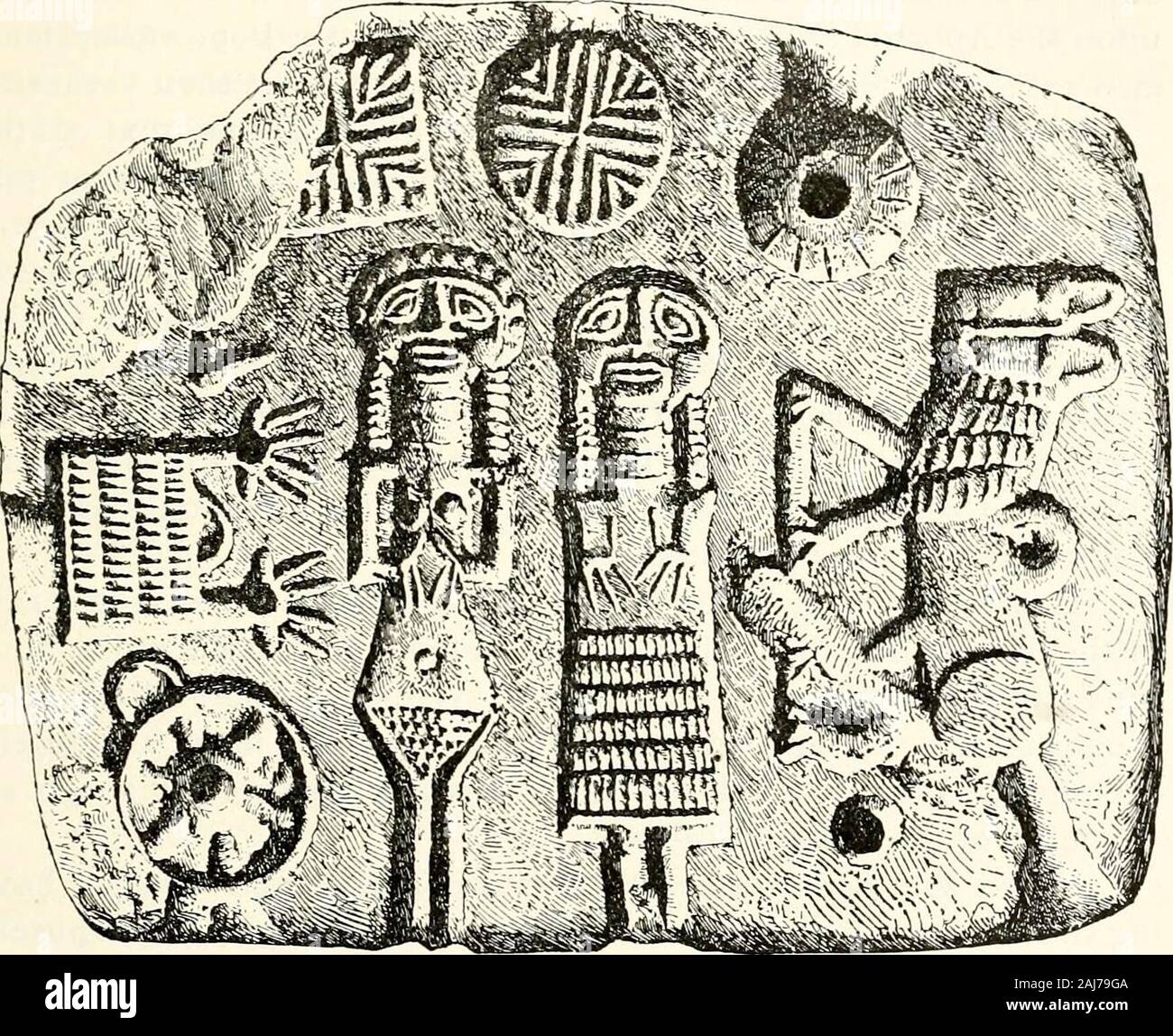The Open court . them. A signing with the cross took place in the Christian worshipon almost every occasion ; it was made by the officiating priest 1 The pallium, originally a mantel worn by the Christian philosophers, ascetics, and monkswas gradually reduced in size to the shape of a ribbon and became a garment of distinction. Itis of pure wool to indicate its pastoral significance. 2Reproduced from Mourant Brock, op. cit., p. 5. THE SEAL OF CHRIST. 243 over himself, over the people, over the disc on the chalice of theEucharist, over each half of the broken bread, and over the giftsgiven to t

Image details
Contributor:
The Reading Room / Alamy Stock PhotoImage ID:
2AJ79GAFile size:
7.1 MB (719.8 KB Compressed download)Releases:
Model - no | Property - noDo I need a release?Dimensions:
1752 x 1426 px | 29.7 x 24.1 cm | 11.7 x 9.5 inches | 150dpiMore information:
This image is a public domain image, which means either that copyright has expired in the image or the copyright holder has waived their copyright. Alamy charges you a fee for access to the high resolution copy of the image.
This image could have imperfections as it’s either historical or reportage.
The Open court . them. A signing with the cross took place in the Christian worshipon almost every occasion ; it was made by the officiating priest 1 The pallium, originally a mantel worn by the Christian philosophers, ascetics, and monkswas gradually reduced in size to the shape of a ribbon and became a garment of distinction. Itis of pure wool to indicate its pastoral significance. 2Reproduced from Mourant Brock, op. cit., p. 5. THE SEAL OF CHRIST. 243 over himself, over the people, over the disc on the chalice of theEucharist, over each half of the broken bread, and over the giftsgiven to the church.^ That the sign of the martyr instrument ofCalvary should have played this prominent part .in the church ser-vice of the earliest Christians is not probable; but we may assumethat we are confronted here with an ancient practice which issimply the traditional method of consecration. We know that the Galileans were more superstitious than theirJewish brethren in Judea ; they believed in demons, and looked. Mould for Casting, Made of Serpentine.From Lydia, now in the Louvre.- upon every disease as a possession of the Devil. Thus it is butnatural that the Nazarenes of Galilee, for the sake of keeping awayall spirits, should have made frequent use of the salutary sign. Itis not impossible that the salutary sign (sometimes called the sym- 1 See Liturgies and other Documents of the Ante-Nicene period, pages 23, 28, 38, 56, 57, 63, 76, 78, 85, 86, 87, 88, and 90. 2 From Ohnefalsch Richter, Cyprus, Plate C. i. There are eight dies, two deities, one male, one female, one small shrine, one lion with handle attached to the back ; and four amulets, onesolar wheel in the left lower corner, and on the top one disc with rays, one circle and one squaredivided according to the four quarters. !44 THE OPEN COURT. bol of the god of life) was even before Christ called the sign of theMessiah, and, considering the important part which Jesus playedin their imagination, we may fairly assume that